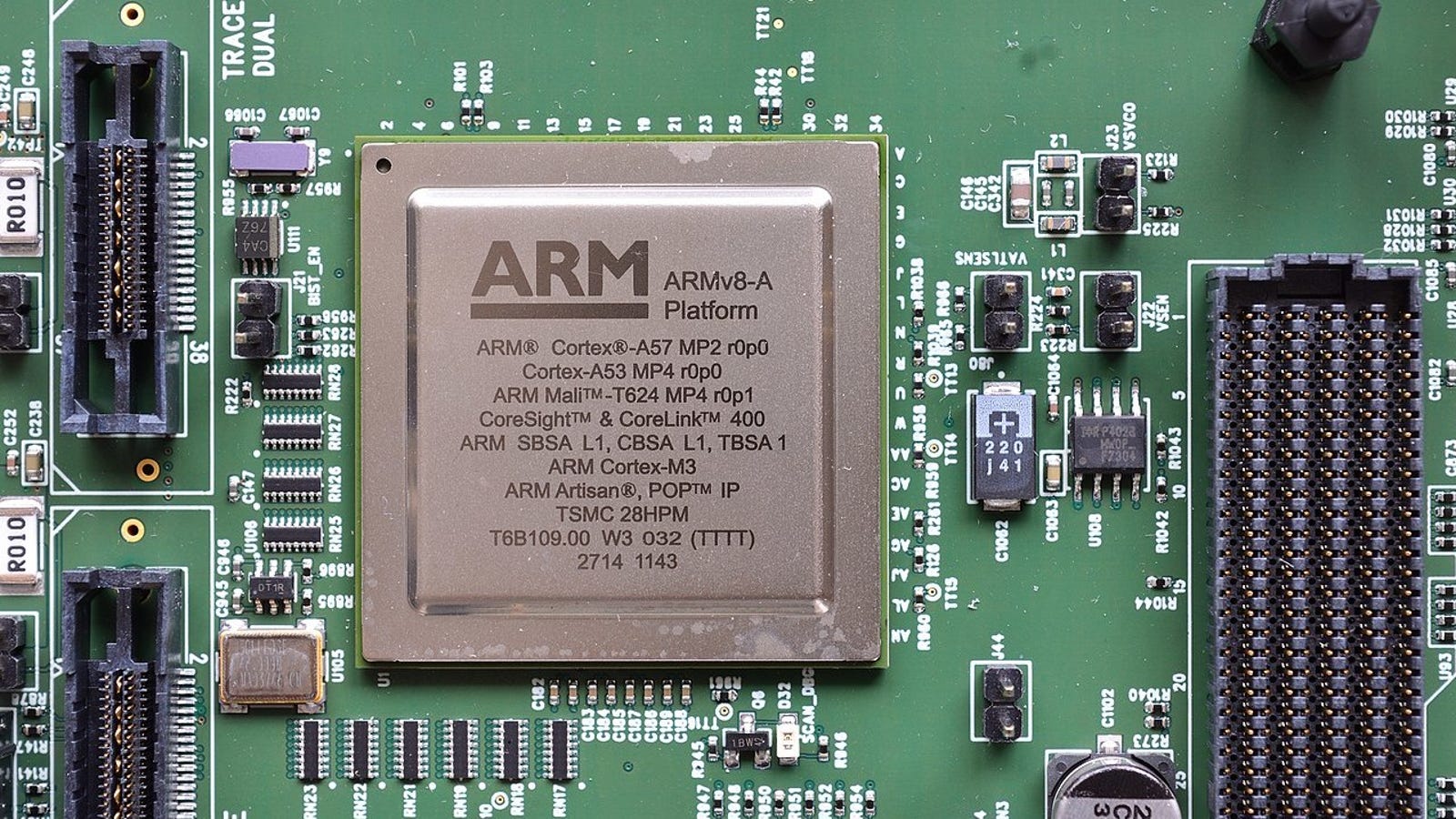https://gizmodo.com/arm-takes-down-boneheaded-website-attacking-open-source-1827513230

ARM, the incredibly successful developer of CPU designs, appears to be getting a little nervous about an open-source rival that’s gaining traction. At the end of June, ARM launched a website outlining why it’s better than its competitor’s offerings and it quickly blew up in its face. Realizing the site was a bad look, ARM has now taken it down.
For the uninitiated, ARM Holdings designs various architectures and cores that it licenses to major chipmakers around the world. Its tech can be found in over 100 billion chips manufactured by huge names like Apple and Nvidia as well as many other lesser-known players in the low-power market. If ARM is Windows, you can think of RISC-V as an early Linux. Like ARM, it’s an architecture based on reduced instruction set computing (RISC), but it’s free to use and open to anyone to contribute or modify. While ARM has been around since 1991, RISC-V just got started in 2010 but it’s gaining a lot of ground and ARM’s pitiful website could easily be seen as a legitimizing moment for the tech.
The site riscv-basics is now offline but an archived version is still available. It outlines five basic points for why someone might still consider paying ARM instead of going with the free option. Some of the issues it raises have validity, but it’s so low-information that it’s hard to give ARM much credit. According to the Register, the attack campaign quickly backfired despite the fact that it barely made a blip on the mainstream radar.
Various members of the tech industry and employees at ARM cried foul, saying the site amounted to punching down and that it sends an anti-open-source message. Surely, the Softbank-owned company itself isn’t particularly friendly to open-source developers but that doesn’t mean its employees don’t know the value such a community provides for the whole industry. From a business perspective, however, the site could be perceived as ARM acknowledging that RISC-V is now a legitimate rival that must be crushed.
We reached out to ARM for comment on why it published the site in the first place and what prompted its shuttering and got the following statement:
“Our intention in creating a web page to offer key considerations around commercial RISC-V based products was to inform a lively industry debate. Regretfully, the result was something different, a page that wasn’t in line with Arm’s collaborative culture, so we’ve taken it down. Indeed, many of our own people also told us they didn’t like it. One thing to clear up immediately is we absolutely did not want to give the impression we were attacking open source as we are highly committed supporters of open source communities in many different areas.”
As far as sparking a discussion goes, you could say the site was a success. We now have an excuse to discuss Western Digital’s decision last December to use the RISC-V processor architecture in its products going forward; we can discuss Intel investing in a commercial RISC-V startup called SiFive; we can discuss NVIDIA using RISC-V in its next-gen GPU microcontroller. Above all, we can discuss investors taking notice of the increased acceptance of the open-source tech and its possible repercussions on supply chains across the industry.
The Register does a good job of running down the issues with each of ARM’s individual claims about RISC-V on its now-defunct website, but the biggest takeaway is that these bullet points mostly seem designed to reassure shareholders that ARM’s business still has a purpose. Western Digital might find RISC-V to be a perfectly suitable option for the controllers in its drives, but that doesn’t mean that Apple is going to walk away from ARM-based chips.
Still, RISC-V could develop into a legitimate competitor and ARM’s attempt to spread doubts about the tech has only prompted supporters to launch sites with counter-arguments and to feel a newly emboldened sense of purpose. How’d that work out for Microsoft’s war on Linux?
via Gizmodo https://gizmodo.com
July 11, 2018 at 02:42PM
